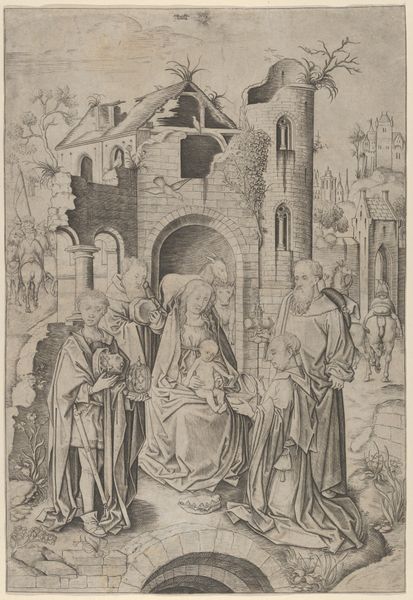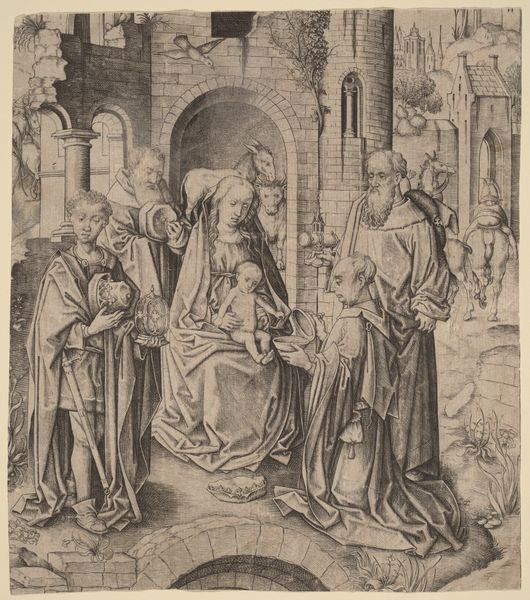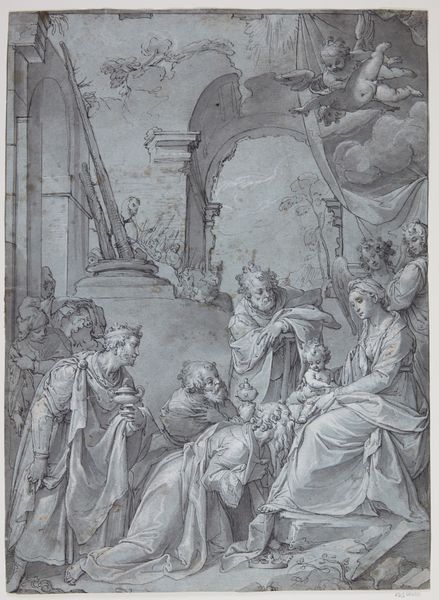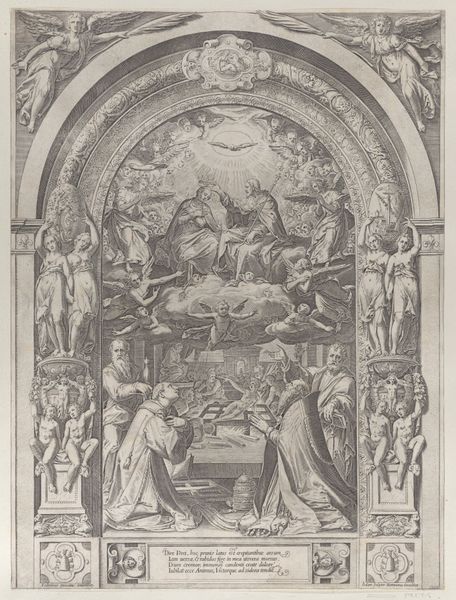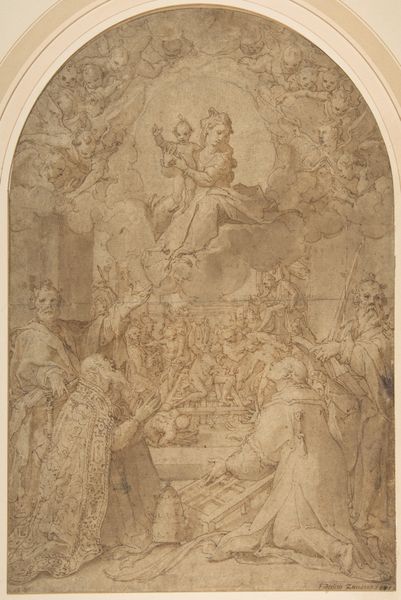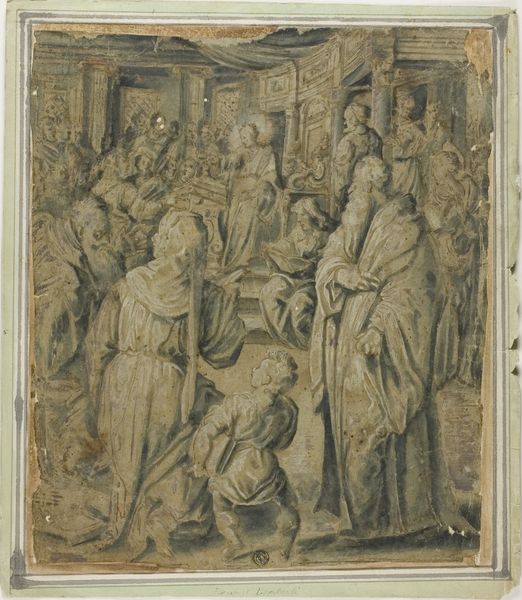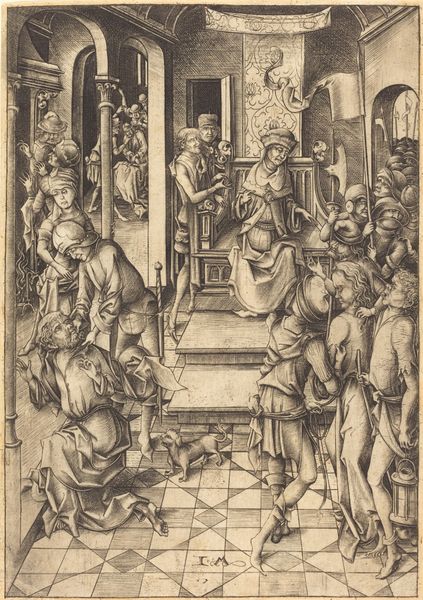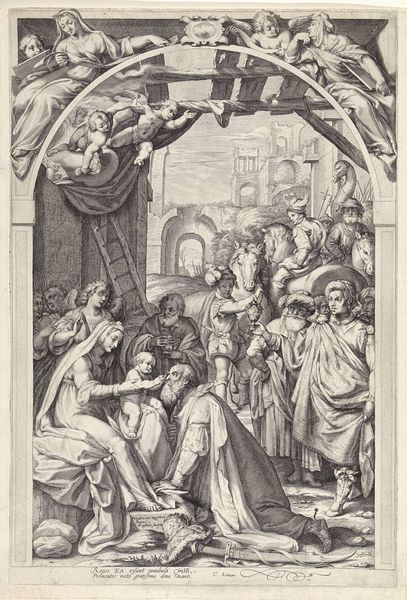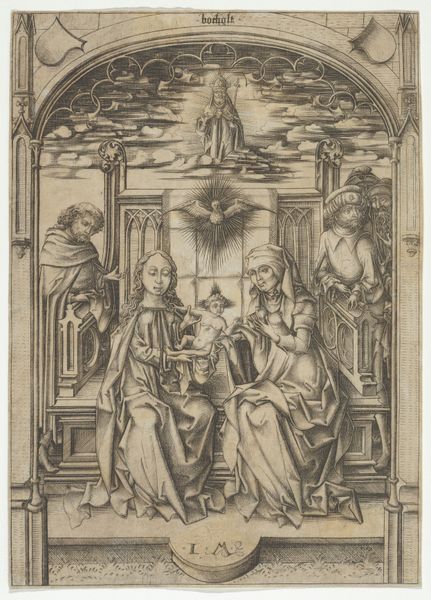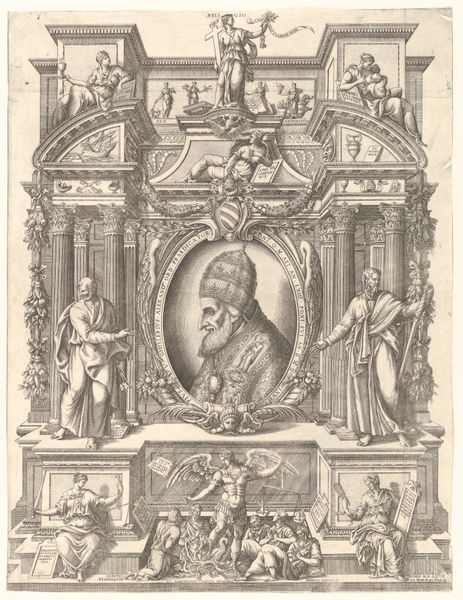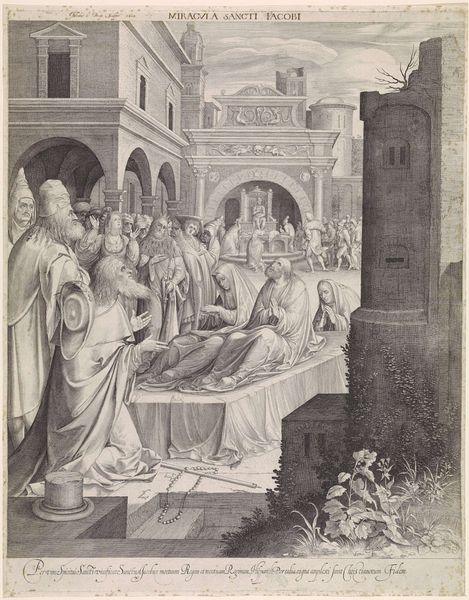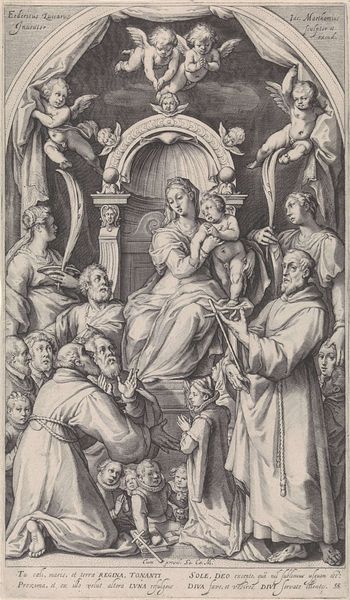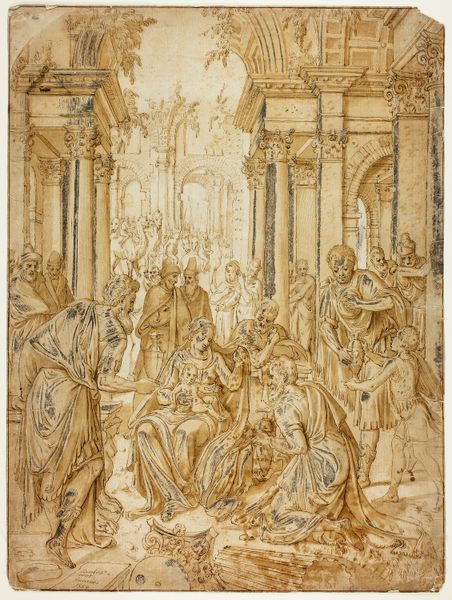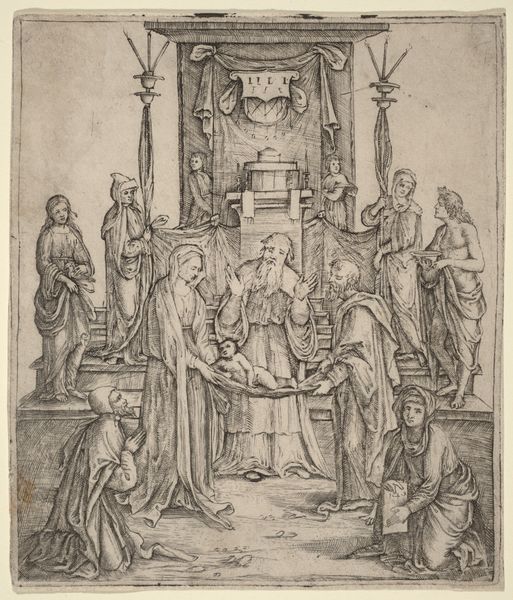
panel, oil-paint, fresco
#
portrait
#
high-renaissance
#
panel
#
narrative-art
#
oil-paint
#
strong focal point
#
figuration
#
fresco
#
11_renaissance
#
handmade artwork painting
#
oil painting
#
child
#
framed image
#
classicism
#
13_16th-century
#
chiaroscuro
#
history-painting
#
italian-renaissance
#
watercolor
Dimensions: max. 114.6 x 84.8 cm
Copyright: Public Domain
Curator: Standing before us is the intriguing "Adoration of the Magi," a panel painting created circa 1516-1519, currently housed at the Städel Museum. Editor: Wow, what a scene! It's got that classic storybook vibe, but something about it feels... off-kilter. Maybe it's the somewhat faded, almost dreamlike quality. Curator: That quality may derive from the use of oil paint, allowing for subtle gradations and a soft modeling of forms which would become central to high-Renaissance painting. Notice how the composition itself draws the eye toward the Virgin and Child, positioned centrally within the architectural ruins. Editor: Ruins, yeah! That's part of the oddness, right? A holy birth in the middle of broken-down buildings. Makes you wonder what it’s all meant to suggest symbolically. Curator: The ruins serve as a potent symbol of the decaying Old Order, giving way to the new dispensation heralded by the birth of Christ. Observe also the carefully arranged figures of the Magi, their garments painted in striking hues. Editor: True. And those are some wild hats those Magi are wearing, aren't they? But there is a kind of subdued regality in the painting. Look how carefully they are approaching, each bearing unique gifts, almost unsure, yet respectful. I wonder who the artist was. The page refers to this artwork's author as Anonymous. It does appear there is some exquisite detail and expression rendered in this work of figuration. Curator: The anonymous nature invites further speculation on its origins and intentions. But in the lack of an established authorship, we can consider its formalism more readily. For instance, observe the play of light and shadow throughout the scene – what artists call "chiaroscuro" which serves to dramatize the central figures and creates an illusion of depth, thus engaging in a clear, classical aesthetic ideal. Editor: So much in one piece of work! It is amazing how a scene so classic and timeless can also feel so unique and a little strange, just for its specific blend of composition and tone. It kind of invites you to think about old stories in a completely new way. Curator: Indeed. By synthesizing both careful observation of form and cultural meaning, "The Adoration of the Magi" encapsulates the dynamism of the Renaissance—even if, in many respects, mysteries persist about its specific origin and meaning.
Comments
stadelmuseum almost 2 years ago
⋮
In the sixteenth century Antwerp, a major trade metropolis, became one of north-western Europe’s leading art centres. Among its many painters’ workshops were a number of studios that worked closely with one another. For want of a better name, the respective artists are collectively known as the ‘Antwerp Mannerists’. One of their main representatives, the ‘Master of the von Groote Adoration’, was named after this work. Here, he depicted the ‘Adoration of the Magi’ in a wealth of detail, accompanying it with two Old Testament scenes that serve as a commentary.
Join the conversation
Join millions of artists and users on Artera today and experience the ultimate creative platform.
